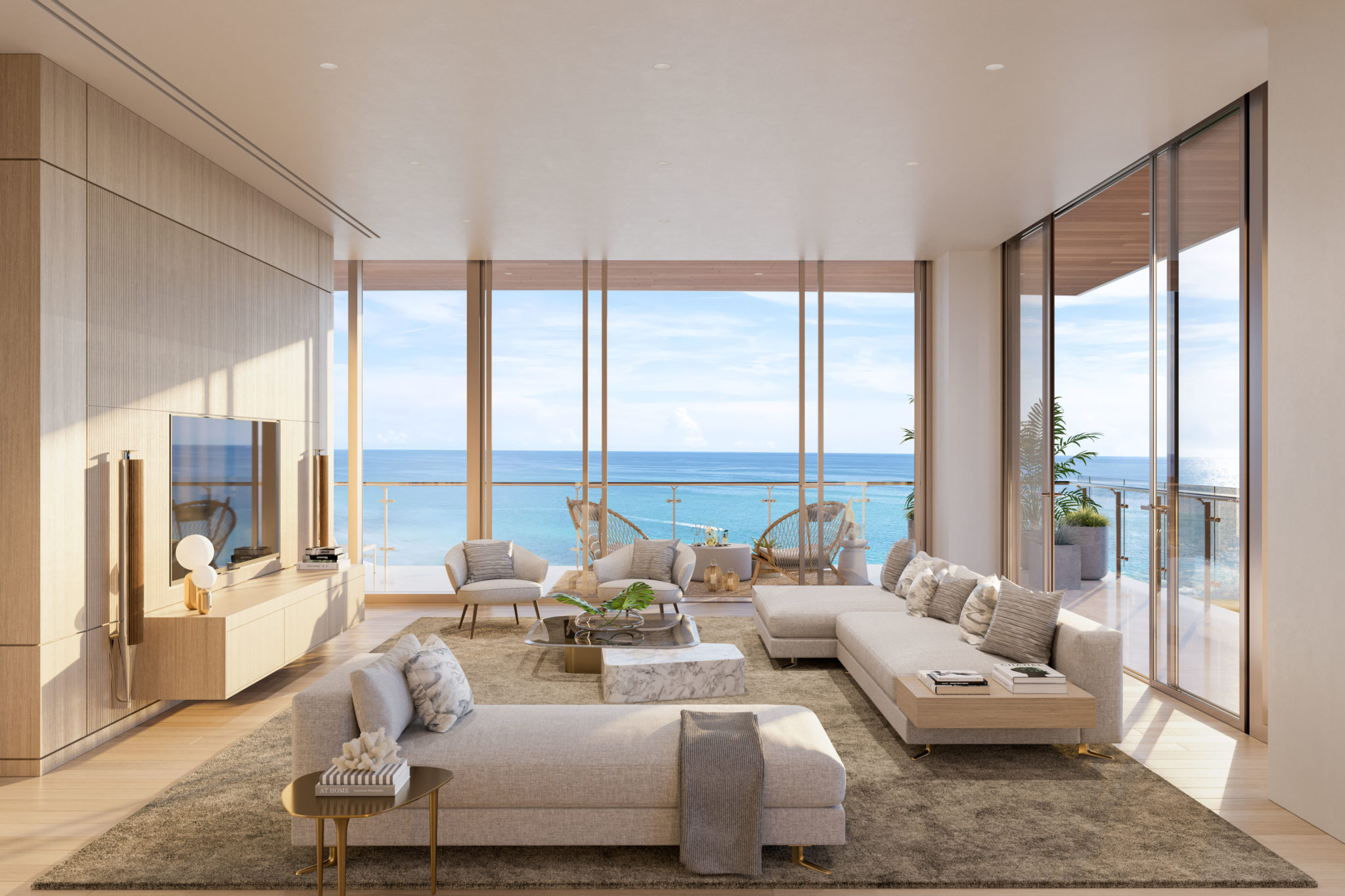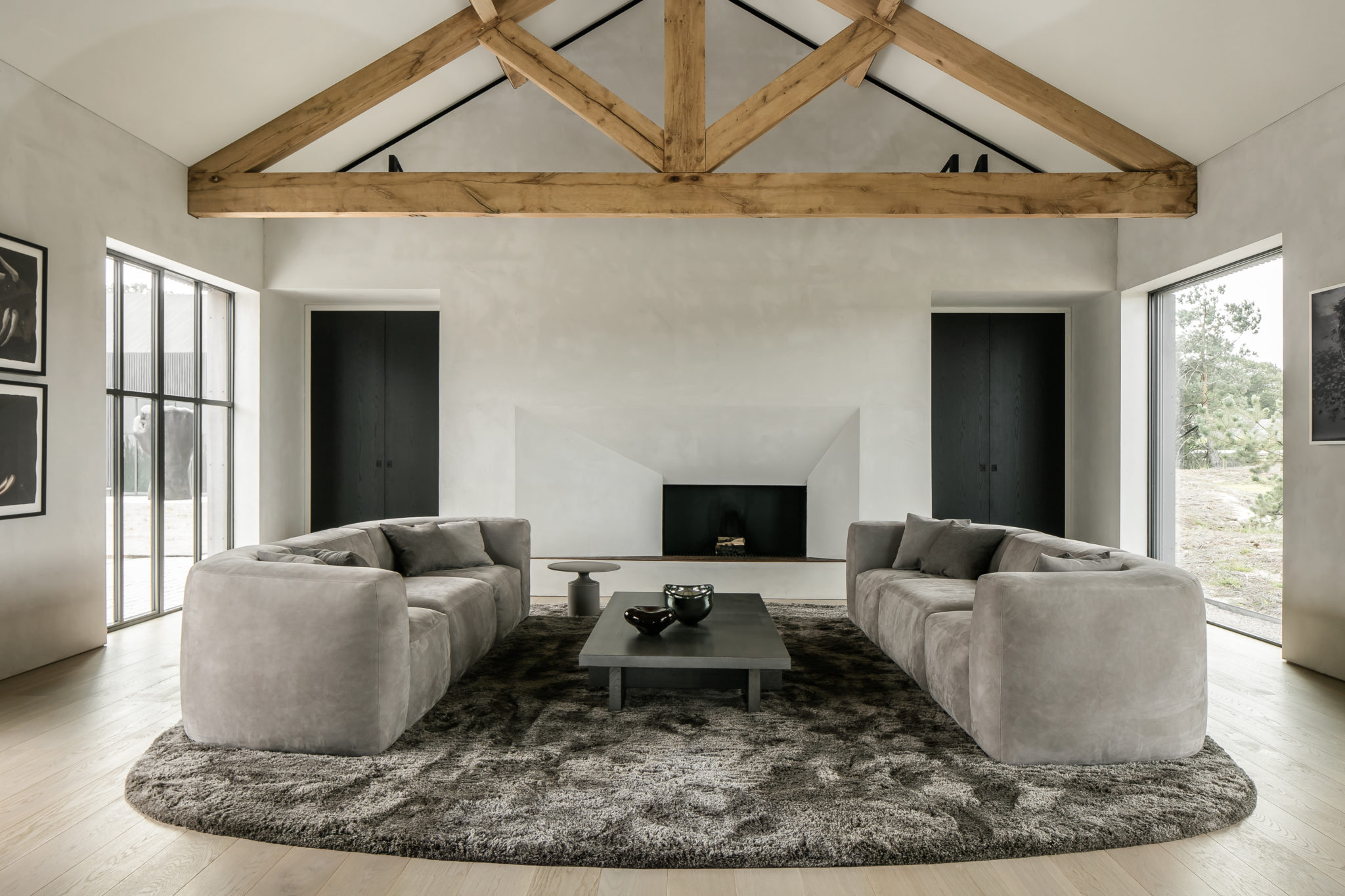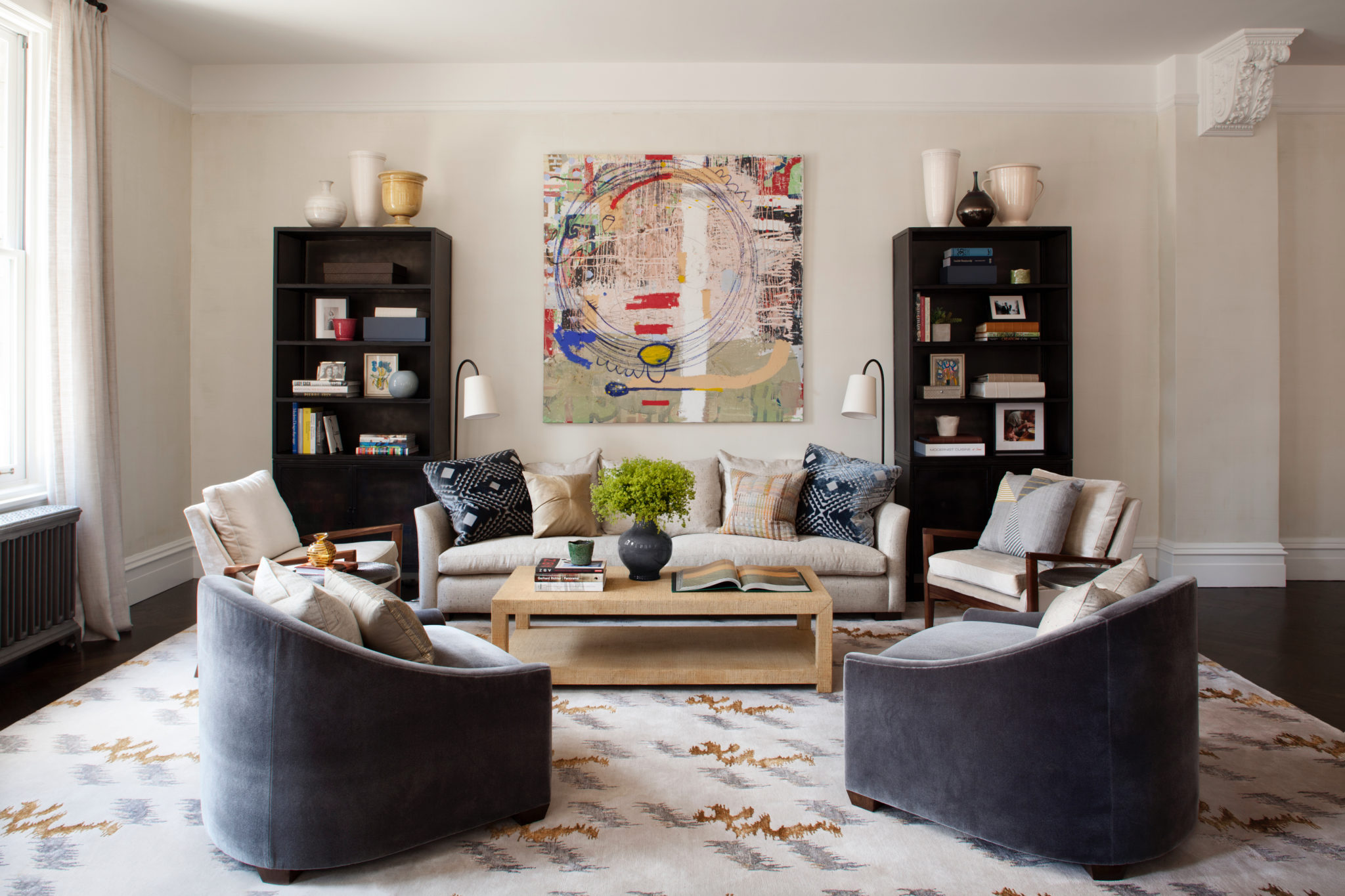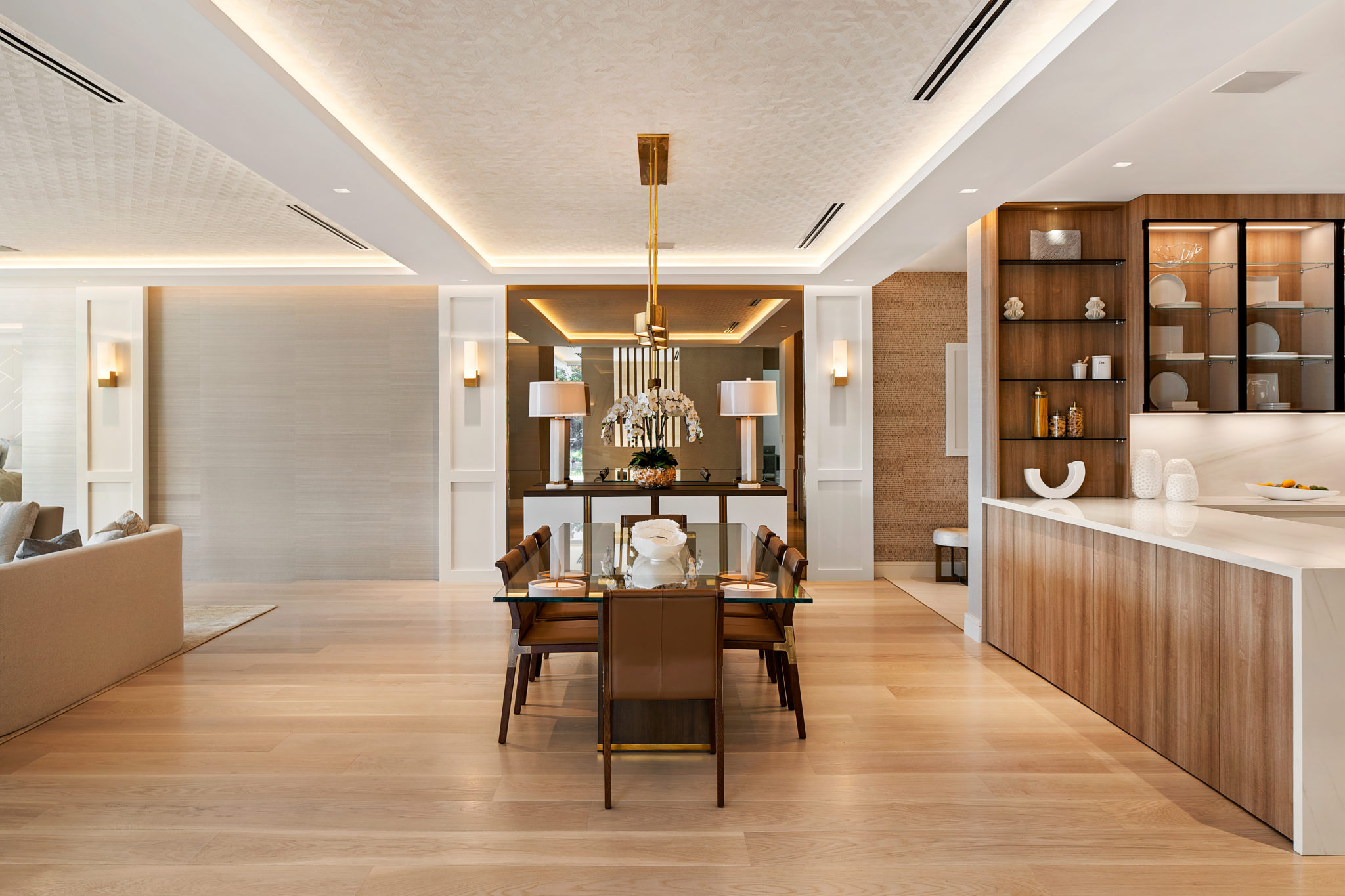December 13th, 2021

Pembrooke & Ives Interior Design, Austin Patterson Disston Architect. Courtesy Bespoke Luxury Marketing
DAVID SCOTT
For Manhattan and Sag Harbor-based designer David Scott, all design boils down to one thing: honesty. “When I’m talking to a client,” he says, “I ask a lot of questions and do a lot of listening. I ask not only How do you live but how do you want to live? In all of this, honesty is key.” In this home, for instance, a pied-à-terre in New York City for a Hamptons-based client, Scott explains, “This was the client’s first apartment in the city, so it was completely new for them. It’s located amongst all the best restaurants, so they have traditionally spent the majority of their time dining out.” As a result, much of the space is devoted to entertaining, not cooking. Scott therefore populates the living room with his signature mix of vintage furniture and custom pieces. Moving into the future, Scott remains certain the past will hold currency. “I always try to use vintage pieces,” he says, “after all, it’s the most sustainable form of design.”

Gianni Franchellucci. Courtesy David Scott Interior Design
SOFIA JOELSSON
It’s no surprise that Sofia Joelsson, a former Miss Sweden who emigrated to the United States in 1998, has an eye for aesthetics. The Miami-based designer, whose work includes private residences in the Bahamas, Miami, New York and other luxurious destinations, says the goal of her approach is always harmony. “I let the space tell me what it wants to be,” says Joelsson of this residence in 57 Ocean, a luxury condo suite in Miami whose Atlantic views inspired the subtle, natural aesthetic. In some cases, it’s about letting the design play wingman to the art. “A lot of my clients have museum-quality collections,” she explains, so “it’s important to allow those pieces to stand out. It’s all about ultimate flow.” But, of course, it’s also about comfort. “I’m obsessed with finding the latest and greatest textiles. Today you can get a textile of the finest linen or silk that is cleanable and bleachable. My clients have multiple homes around the world, and they don’t want to have the maintenance.” As for what the future holds, Joelsson sees innovation—textile and otherwise— always in service of client. “The key is to let technology lead to more ease, not to more complication.”

Conceptual Rendering of Sofia Joelsson’s 57 Ocean design. Courtesy Bespoke Luxury Marketing
PIET BOON
Some designers rely on pattern, others on texture, and some on profusion and excess. For legendary Dutch designer Piet Boon, simplicity is paramount. Whether it is an award-winning office building in his native Netherlands, a residential resort in South Korea or a private villa in Bonaire, Boon distills each property to its simple lines. “If the lines are not correct, it will disturb the whole feeling. We always make it very calm,” he says. For this villa located just off the beach, for instance, Boon used simple shapes, inspired by native architecture, to create a versatile home—filled with custom furniture—cooled by the prevailing breeze. As the winds of time blow design forward, Boon sees the principles remaining the same: simplicity and cleanliness, he says, yield timelessness: “We want to create spaces that don’t get bored in a few years.”

Thomas de Bruyne. Courtesy Piet Boon
AMY LAU
Often touted and always true: an Amy Lau space is indisputably one of a kind. The New York-based designer (and co-founder of the prestigious Design Miami Fair) custom designs nearly every element in her client’s home. “A custom piece,” she says, “tells the story of who the clients are.” In this space, for instance, Lau worked with legendary designer Vladimir Kagan, visited the factory seven times, and laid out paper templates to ensure the couches sat perfectly in the room, leading the eye to the bar and then the patio beyond. Sure, all custom work might be pricey, says Lau, but “what I’ve learned is that a lot of things can make us unhappy. The fewer things we have, the better. It’s the more thoughtful things around us that provide happiness. Less is more.” As the means for fabrication continue to evolve, Lau sees no end to the trend of customization. “The future is,” she says, “without a doubt, about increasing individualization.”

Thomas Loof. Courtesy Amy Lau
JESSE CARRIER
Jesse Carrier and his wife, Mara Miller, met at the Fashion Institute of Technology as students and, at the helm of design firm Carrier & Co., have been creating bespoke interiors ever since. According to Carrier, the pair doesn’t just create spaces but tells stories. A good example is the Soho loft seen here. “We used a myriad of elements, from the curated collection of books to the coffee table, to create a lived-in space,” he explains. The future as Carrier sees it might look a lot like the past, and that suits him just fine. “In recent years, we witnessed a surge of modernism in design: expanses of glass and stone, and ‘open concept’ plans in architecture. But more and more, we’re happy to say, we’re seeing the market return to comfortable, livable spaces filled with warmth, color and pattern.”

Sam Frost. Courtesy Carrier & Co
LINDA RUDERMAN
Greenwich-based designer Linda Ruderman is a step ahead in creating “healthy homes”. She advocates the physical and aesthetic benefits of smart home systems that include purified air and water circulation and responsive lighting. These features are proven to deliver a host of health benefits, including improved cardiovascular and respiratory functioning. They can also enhance the aesthetics within a room, especially in terms of lighting. Ruderman is a big fan of Ketra lights by Lutron, which produce natural lighting that can enrich the vibrancy of colors and fabrics in a room, and can automatically adjust throughout the day to mimic natural light conditions. Increased natural light improves sleep and can reduce seasonal depression, but also brings life to windowless or dim rooms. “It’s basically an integrated wellness solution that at this point is becoming essential for work-at-home life,” Ruderman says. Her comment fits into an overall trend of increasing symbiosis between nature and interior design. “Nature is really playing a big part in contemporary and modern design, bringing the indoors out and vice versa.” Complete outdoor kitchens, porcelain flooring that can recreate a hardwood look outdoors, and folding glass patio doors that all but deconstruct a home’s fourth wall, serve to create a continuous space that blurs the line between inside and out. “When I design, I stand in the house and see what I’m going to see outside, which inspires me to make sure it’s cohesive. I see using a lot of natural elements, whether it be lamps, objects of art, selenite, earthenware, or pottery, becoming very popular, particularly with moody types of colors like dark blue, clay, and terracotta.”

Courtesy Linda Ruderman






